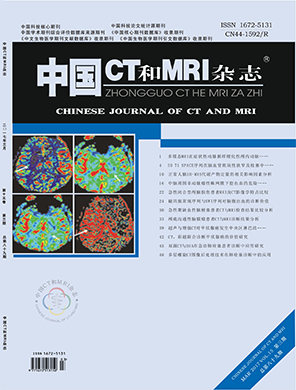Head and Neck Imaging
The Role of Three Dimensional CT Reconstruction Technique and MRI in the Diagnosis and Treatment of High Energy Induced Cervical Spine injury*
Author:JIANG Yong, GUO Hua, CAI Xin-yu.
affiliation:Department of Radiology, Jingzhou Third People's Hospital, Jingzhou 434000, Hubei Province, China
PDFAbstract
Objective To investigate the role of three-dimensional computed tomography (CT) reconstruction technique and magnetic resonance imaging (MRI) in the diagnosis and treatment of high energy induced cervical spine injury, and to evaluate its diagnostic value. Methods The clinical data of 20 cases with high energy induced cervical spine injury confirmed by operation and pathology who were treated in the department of orthopedics and traumatology in our hospital between 2009 and 2013 were analyzed retrospectively. Three dimensional CT reconstruction technique and MRI examination were performed in all patients. The findings of the two imaging methods were analyzed and the diagnostic value of the two was evaluated. Results There were 25 vertebral burst fractures in 20 patients, involving the C7 15 vertebral segment, C6 5 segment, C5 3 segment and C4 2 segment. There were multiple burst fractures in 3 cases, mainly involving the C7 and C6 segment. Among the 20 cases, there were 20 cases involving C7-C6, accounting for 80.00% of the total. MRI signal showed slightly lower or equal signal on T1WI, mixed high signal or high signal on T2WI. MRI examination showed that the types of spinal cord injury included bust type in 4 vertebral bodies. The main manifestations included the height of vertebral body becoming flat, compression height > 1/2, vertebral transverse diameter increasing, anteroposterior diameter increasing and inhomogeneous signal. A total of 14 vertebral bodies were compression type, with vertebral compression becoming flat and wedge in shape as the main clinical manifestations; A total of 7 vertebral bodies were simple type, with signal abnormalities or vertebral body slightly compressed, compressed height < 1/4, no dislocation of spinal canal as the main manifestations. Conclusion Three-dimensional CT reconstruction technique and MRI have their own advantages and disadvantage in the diagnosis and treatment of high energy induced cervical spine injury. The value of MRI in the diagnosis of high energy induced cervical spine injury is relatively higher than that of three-dimensional CT reconstruction technique.
【Keyword】High Energy Induced Cervical Spine Injury; Three-dimensional CT Reconstruction Technique; MRI
【Chart number】R683.2;R445.2
【Document Identification Number】A
【DOI】 10.3969/j.issn.1672- 5131.2017.03.044
Chinese journal of CT and MRI
th15Volume, th 3 Issue
2017Year03Month

Related articles